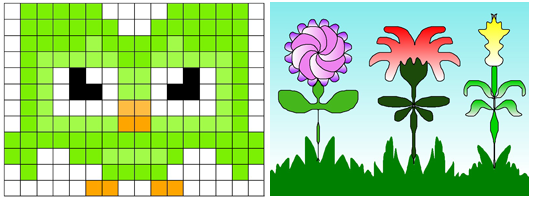
Cut out a semi-circle and rotate it counter-clockwise.ĥ. Cut-out a semi-circle and rotate it counter-clockwise.Ĥ. Cut out a semi-circle and rotate it counter-clockwise.ģ. You simply draw a shape or a pattern of shapes and repeat them without changing their orientation and. Cut out an equilateral triangle from a piece of paper.Ģ. Simple tessellations just use the translation operation. You simply draw a shape or a pattern of shapes and repeat them without changing their orientation and without leaving any gaps or overlaps.Ĭomplex tessellations use more than one of the three basic operations to create a new shape that can tessellate – ie can be fit together without any gaps or overlaps.ġ. Simple tessellations just use the translation operation. reflection Translation can be thought of as sliding the shape along a plane.

If a reflection has been done correctly, you can draw an imaginary line right through the middle and the two parts will be symmetrical “mirror” images. Reflection is flipping an object across a line without changing its size or shape.
#Simple tessellation shapes pro#
Rotation is rotating an object about a fixed point without changing its size or shape. The Generate Tessellation tool in ArcGIS Pro supports most of the common shapes for binning such as squares, triangles, diamonds and various forms of hexagon including the (newly released at version 3.1) H3 variety as Margaret Crawford has recently discussed in this blog. ALSO CHECK OUT: Escher Tessellations Draw zentangle patterns on our printable triangle shapes below and then cut them out to form a tessellation.

Translation is sliding a figure in any direction without changing its size, shape or orientation. Shapes that make up tessellation patterns are the equilateral triangle, squares and hexagons. Tessellations can be created by performing one or more of three basic operations on a shape: translation, reflection and/or rotation. Want to make your very own tessellations?


 0 kommentar(er)
0 kommentar(er)
